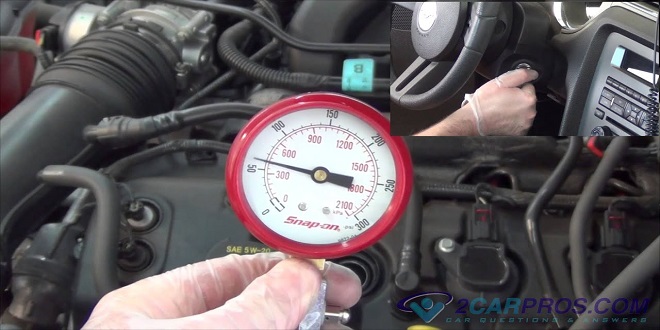Testing and understanding an engine’s compression readings

Perhaps your car’s engine has begun to idle in a rough manner. Maybe you found the collector car of your dreams, but are unsure of the condition of its engine. When in doubt, a cylinder leak-down test or compression test is in order. While a leak-down test may be more accurate, it requires compressed air, whereas a compression test can be done almost anywhere. In this story, I will walk you through the compression test.
The compression test
To get accurate results from a compression test, a compression gauge of good quality is required. A screw-in gauge is preferred over cheap gauges with a rubber friction cone that pushes into the spark plug hole. An assistant with a pencil and pad of paper is also helpful. Start the engine and run it up to operating temperature.
If the vehicle has been sitting for a long period of time, it should be run for about a half-hour to re-seat the rings. Then, shut down the engine and loosen each spark plug for about a half turn. Then go back and re-tighten each spark plug, start the engine and let it run for a couple of minutes. Shut down the engine and pull the plug wires.
Read the spark plugs as they are removed.
Pull the spark plugs and carefully arrange them in the order of the cylinder from which they were removed. Take time to read the spark plugs, as they indicate a lot about the condition of the cylinder from which they were removed. Ideally, the plugs should have brown insulator deposits. Sooty black insulators indicate anything from carburetion problems to major engine issues. Blistered white insulators indicate overheating, or the mixture is too lean. A light yellow glaze on the insulator indicates the car was running at low speeds for an extended length of time and somebody suddenly jumped on the throttle.
Deciphering the readings
Low-compression readings can be caused by various conditions. The most obvious is the engine is old and worn out. Older engines, manufactured prior to 1972, were not designed to be run on unleaded gasoline. Tetraethyl lead, which has long been phased out of gasoline in the United States, serves as a lubricant, thus hardened seats were not necessary for vehicles manufactured during the period in which Tetraethyl lead was in use. Running a pre-1972 engine that requires lead on modern unleaded fuel without lead additive can produce low readings due to engine wear/damage.
Breaker Points For Beginners
once knew a twenty-something guy who purchased a 1964 CJ-6 and was unhappy with his Jeep because it didn’t start, runs, drive or perform like a modern SUV. The Jeep was hard to start when cold because the young man was from a generation that had grown up with electronically fuel-injected gasoline engines in cars, light trucks, and SUVs, so he didn’t understand how a carburetor worked or why it had to be choked.
He also found that the Jeep was hard to steer because it didn’t have power steering. It was “hard to stop” because it didn’t have power brakes, and “underpowered and slow” because its four-cylinder engine had only been born with 72 GHP.
Masstamilan is a popular website that offers Tamil songs for free downloads. It is a go-to platform for Tamil music lovers to find their favorite tracks easily.
For those who are new to the hobby
If you are a newcomer to the vintage vehicle hobby or want to be, you should know that the only commonly collected vehicles that even come close to performing like modern SUVs are pickups or Chevy Blazer-type vehicles. However, these trucks often lack the rugged military look and battlefield mystique of fully tactical (or “combat”) military vehicles, which this article focuses on. However, the workings of a breaker-point system are similar to those of passenger cars of the same era.





